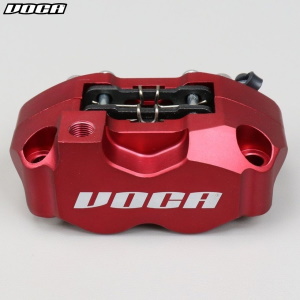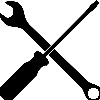
Home > general information > Tips and Guides > Technical guides > General Guides >
HOW TO RELEASE YOUR BRAKE CALIPER (SCOOTER, MOTORCYCLE, QUAD, MOPED)?
THEbrake caliper is a part that is part of the braking system of your two-wheeler or quad. It allows the pads to pinch the brake disc more or less strongly depending on the pressure exerted. Made from materials with a high thermal amplitude (cast iron, steel, ceramic, aluminum alloy or carbon), it withstands repeated efforts that can raise the temperature on its surface to more than 100 degrees Celsius. It is available in “floating” or “fixed” models. It is made up of at least one piston, or even two or four depending on the braking power required for the types of vehicles.
On the fixed stirrup, the brake pads are pushed against the disc using one or more pistons located on each side of the disc.
On the floating caliper, only the inner pad is pushed against the disc. The outer pad experiences the pressure par a sliding system connecting the two pads. It is the most widespread system.
The stirrups are thus pushedar sliding pistons, themselves pushedar brake fluid.

How do you know if you need to loosen your brake caliper?
Due to its mechanical constraints of use, the brake caliper is subject to constraints and par lack of maintenance, risk of seizure.
Here are the main symptoms:
abnormal sounds
Another sign that may cause a brake caliper to come loose is the presence of abnormal noises, especially when braking. The wheels vibrate when braking. These abnormal noises can be sharp noises or sudden shock or impact noises when the brakes are applied.
Brake fluid leaks
Leaking brake fluid is one of the most common symptoms of a seized brake caliper. The calipers use brake fluid pressure located at the master cylinder.
From repair kits make it possible to restore the tightness of a leaking piston.
Disk observation
Observing the brake disc, tracebluish-colored overheating characterizes this type of problem.
 How to clean the brake caliper piston?
How to clean the brake caliper piston?
One of the most effective ways to prevent seizing or loosening a brake caliper is cleaning its piston. It is necessary during the cleaning of the piston not to pull it out too much from the caliper, car this could cause a brake fluid leak.
After separating the pads, remove the clips or axle from the pads. Remove the pads. Clean the inside and outside with brake cleaner. Remove residue with a clean cloth. Both the inside and the outside must be clean.
Pour in brake cleaner at the level of the slides. The columns that go inside will also need to be treated. You will then need to check the condition of the caliper. If it is still seized, you will then need to act on the piston.
Once this cleaning is done, it is advisable to lubricate the piston(s) with brake fluid or grease according to the manufacturer's instructions. Push the piston back inside the caliper using the plastic tire lever. Proceed in the same way on the other pistons (if this is your case).
Once the pistons have been cleaned and lubricated, put them back on the caliper which will also have been cleaned beforehand.
Finally, the pads will be put back in place.
When the piston is out, you have to start par remove rust and dirt to return it to its original place. In this case, do not forget to change the seals for optimal operation.
Once the caliper is free, it is recommended to bleed the brake system to ensure perfect operation while riding. Find our tutorial on the brake system bleed and our guide to the brake fluid.
If, despite these attempts, the piston does not move and does not return to its normal position, the caliper will have to be completely changed.
How to grease the brake caliper?
In order for the clearance between the caliper and the posts to be done correctly, it is necessary to lubricate with fat. If lubrication is insufficient, the caliper will rub the columns causing overheating. It is therefore essential to lubricate the caliper regularly.
After having partially dismantled the caliper, coat the pillar and the bellows of the caliper support with grease, taking care to prevent the grease from depositing on the disc or platelets.
If grease has been deposited on the disc during handling, clean the disc with acetone or trichlorethylene.
Conclusion
To loosen a brake caliper, you will need:
- remove the braking system to access the calliper.
- immerse the brake caliper in penetrating oil (WD40) or directly into brake fluid which will clean and lubricate it.
- clean the piston(s), change the seals.
- reassemble the caliper and change the brake fluid par a complete purge of the system.






